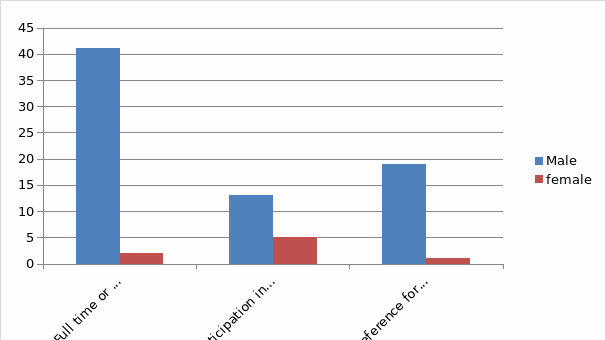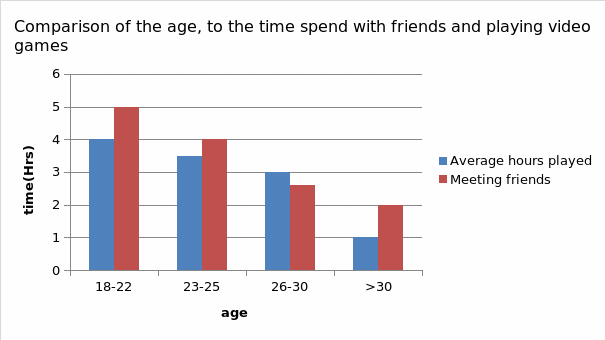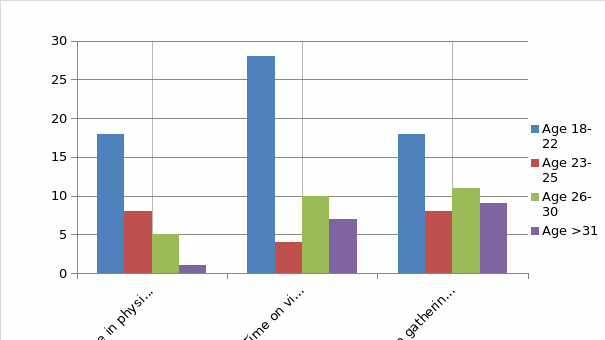Introduction
Over the years, lifestyle has changed dramatically in so many diverse ways. The sedentary lifestyles that most people have adopted have not come without consequences. The types of foods taken often are fast foods and those that require little or no preparation time at all. The ultimate consequence of this is that there are health issues developing, and some have adverse effects in the long run. Physical activity is any bodily movement produced by the skeletal muscles that result to caloric expenditure. According to Welk, the effect of physical activity is so strong such that even with the slightest measurement techniques researchers consistently document the strong health benefits associated with physical activity.
The changing lifestyle has brought about much change to the activities for which the young people are involved in. The parents no longer let their children go out and play in the dirt but instead lock them up in the houses and provide toys and video games for them to keep themselves busy. The children grow in this manner and are not used to physical activity even as they go to school. Their bodies are not used to strenuous activities and as such only engage in activities, which make them less tired such as video games. This generation has come of age and even has children who are worse than they are. It remains a problem for parents since they cannot tell the difference between child overprotection and allowing them to dirty themselves for health reasons.
While the significance of physical activity is illustrious, more accurate measures are needed to clarify the amounts of specific physical activities that are needed for health benefits, as well as a better understanding of the mechanisms under which these benefits are gained. Research on the psychosocial factors that influence participation in physical activity by psychologists has long been going on for quite some time. They all have unanimous conclusions that numerous personal, environmental and social factors combine to determine a person’s habitual activity.
This research centered on a number of factors, which were dominant in developing the questionnaire. They include marital status, full time or part time students or employees, participation in volunteer work, and whether they played video games. The video games have almost entirely replaced the physical games with as much excitement and fun but no actual physical activity unlike few years ago. People of all ages especially the youth and children have almost entirely forsaken the field and gone to computer games.
Research Objectives
This study was set to determine the level of physical activity among students and employees and their engagement in video games.
Research Questions
The research concentrated most on students and employees who could be either married or single. The exact questions asked were:
- They were asked to specify their marital status.
- Whether they were full time or part time student or employees.
- The number of times they engaged in physical activity in a week
- They were asked whether they ever participate in volunteer work.
- How many times they gathered together with friends.
- Whether they preferred playing video games rather than going out.
- If they preferred playing video games, how many hours per day did they spend while playing?
- If bedtime came while still playing the video game, would they go to sleep or play until the game ends then go to sleep.
The sample frame of this study involved students and employees. Some of which were married and some were still single. Selection of the groups was on the basis that they contain the most active part of the population who are expected to be maximally physically active. Selection of the survey questions was through evaluation of the various activities that, the respondents may be involved in at particular times. The respondents participated through emails sent to them or by verbally answering the questions to the data collector. There was a high response rate and willingness for participation. This was due to the respondent’s interest in their health and its relation to how physically active they were.
During the exercise, the enumerators all said that the respondents all gave consent to answering their questions since they were interested in the topic and had not come across such information before. The fact that there was a direct correlation between their physical activity and their health in the long run. The higher age groups particularly showed concern and even wanted to learn more whereas the younger age group did not show much interest though they also showed concern. They gave lack of time as a major cause for which they never participated in any physical activity, while some indicated involvement in volunteer work as sufficient physical activity.
Results
Histogram showing the male and female activity

This histogram shows that the male participants are more active in video games as well as participation in volunteer work compared to females. It also shows that most of the male respondents were full time students or employees.

The average hours played decreases with increasing age. As individuals grow older, the amount of time they devote to playing video games reduces. This is due to busy schedules of work and family as most respondents of this age group were married. Instead, most of the time is spent with friends rather than playing video games, though a significant number still play these games.
Time spent on various activities with respect to age

Age was shown to be a determining factor in the daily activities of all the individuals who participated. In terms of physical activity, increasing age was associated with decreasing physical activity where the respondents above the age of 31 least involved in physical activity. All the ages showed significant time spent with friends, which is evidence by the fact that most people want to have a group of friends for association. The youngest age group showed the highest time spent on video games, which was much higher in comparison to the time spent on physical activities. The age above 31 also registered a high number of respondents spending much time on video games. This can be attributed to the fact that they no longer consider themselves eligible to physical activities such as games in the field. They would rather relax in their houses and play video games which gives them equal excitement as playing on the field.
Chi square analysis of distribution
There were many other factors not studied in this research such as the level of physical activity or activities that took place while in the company of friends. However, several facts are clear which include reduced physical activity with age and video games are a dominant activity that cuts across all ages. The questionnaire also included questions that demonstrated how deed rooted the respondents were in the video games by asking what happens when bed time comes while they are still playing. 50% of the respondents said that they would continue to play the game until they got tired rather than sleeping. Only 24% said that they would actually quit the game and go to bed. This indicates addiction to these video games.
Conclusion
The fact that 45.9% of the respondents preferred to play video games rather than go out shows gross inactivity among the youth. However, 32.4% of the respondents confessed to have continuously participated in community work, 13.7% of those who participated also preferred playing video games rather than real physical activity. This supports the upsurge of sedentary lifestyle health disorders and conditions, which include obesity, atherosclerosis, and kidney stones among others. With time, the average life expectancy decreases as well as reduced brain capacity. In conclusion, there are myriad conditions that result from this simple behavior taken by the modern youth of physical inactivity and some of the resulting consequences cannot presently be fathomed. There is need to conduct campaigns advocating emphasis on physical activity for children and adults as well. Many healthcare problems that force people to go to hospitals could almost be completely be eradicated by simply taking physical exercises. These exercises reduce stress and enable proper blood circulation which in return keeps many blood related illnesses away. These lifestyle diseases have crept into the society and day by day, they are getting the better part of us.
Reference
G. Welk, Physical activity assessments for health-related research. Champaign, Ill: Human Kinetics, 2002, pp. 39-41.
C. Bouchard, S. N. Blair, & W. L. Haskell, Physical activity and health. Champaign, IL: Human Kinetics, 2012, pp. 62.